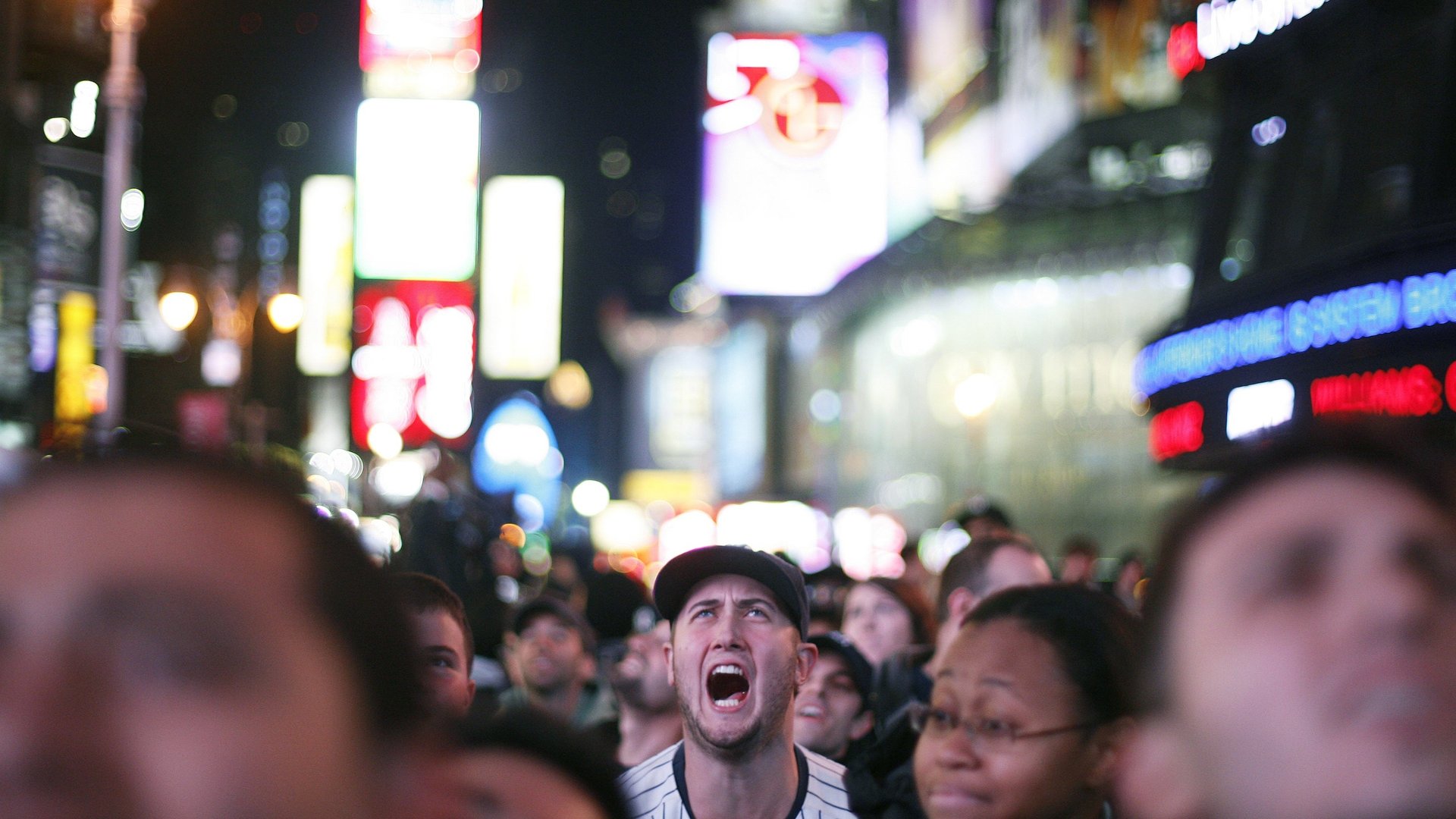There’s a rumor going around that New York was ordered to take down its Times Square billboards. It’s not true
Rarely do New Yorkers speak fondly of Times Square—the “Crossroads of the World”—known for its tourist-heavy foot traffic and gargantuan, neon-lit billboards. It was Fran Lebowitz, New York City’s resident malcontent, who said, “If you’re a New Yorker, and you run into another New Yorker in Times Square, it’s like running into someone at a gay bar in the 1970s—you make up excuses about why you’re there.”


Rarely do New Yorkers speak fondly of Times Square—the “Crossroads of the World”—known for its tourist-heavy foot traffic and gargantuan, neon-lit billboards. It was Fran Lebowitz, New York City’s resident malcontent, who said, “If you’re a New Yorker, and you run into another New Yorker in Times Square, it’s like running into someone at a gay bar in the 1970s—you make up excuses about why you’re there.”
For a moment, it appeared one of the square’s more contentious features—its glaring, oversized billboards—might soon be a thing of the past. A 2012 federal transportation bill placed “arterial routes” like Times Square (which feeds the West Side Highway, part of New York state route 9A) under the jurisdiction of the 1964 Highway Beautification Act. That law, a pet project of former first lady Ladybird Johnson, dictates that billboards may not exceed 1,200 square feet in size, nor stand within 660 feet of the roadside.
“All these billboards, they no longer meet the Highway Beautification Act requirements,” New York’s transportation commissioner, Polly Trottenberg, reportedly said during a panel on city infrastructure on April 30. “So now we’re going to have to go through kind of a complicated process with the state to yank them off because the feds are threatening to take away 10% of our money.”
Indeed, localities that fail to comply are penalized by a 10% decrease in federal highway funding. But after Trottenberg’s comments appeared in a May 1 story in Capital New York, which may have been the trigger for the local and national coverage that followed in the week since, the city’s Department of Transportation (NYCDOT) clarified that New York’s fundings—and billboards—were never at risk.
“Funding will not be affected,” the NYCDOT confirmed to Quartz. “The signage will not be removed.” The agency says city officials are working with the Federal Highway Administration (FHWY), as well as their counterparts at the state level, to “identify a solution in which signage will remain unchanged.”
The FHWA confirms this, noting in a May 7 press statement that the agency “has been working with the New York State DOT and the New York City DOT for nearly a year to correct this unintentional consequence of extending the National Highway System.”
Meanwhile, some critics are tracing the unintended consequence straight back to Trottenberg. At the time Congress placed Times Square under the Highway Beautification Act’s jurisdiction, Trottenberg was serving as under secretary for policy at the US Department of Transportation. “It was her job to understand the legislation and serve as chief adviser to the secretary of transportation on implementation,” Marc Scribner, a fellow at the Competitive Enterprise Institute, explains in a blog post on the free-market advocacy group’s website.
In any event, tourists and a few odd-duck, like-minded New Yorkers can relax: it appears the signs of Times Square are safe. For everyone else, particularly those with a healthy fear of off-brand costumed cartoon characters, this aggressively technicolor stretch of Broadway can maintain its well-deserved reputation as, arguably, the worst place on Earth.